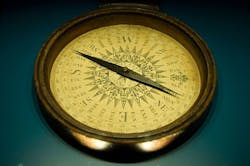Northrop Grumman to flight-test advanced navigation that works with or without the aid of GPS
WOODLAND HILLS, Calif., 21 Jan. 2014. Engineers from the Northrop Grumman Corp. Advanced Navigation Systems business unit in Woodland Hills, Calif., will conduct advanced flight testing of new navigation technology designed to operate precisely even without the use of GPS satellite navigation signals.
Northrop Grumman has won a phase three contract for the U.S. Air Force Maintain Accurate Geo-registration via Image-nav Compensation (MAGIC) program, which seeks to improve geo-registration accuracy for positioning and pointing applications, even in GPS-denied conditions.
In MAGIC phase three, Northrop Grumman will continue to develop capabilities for incorporating 3-D maps, improving performance, quantifying uncertainties in image-based navigation, and conduct additional test flights to prove real-time performance in realistic environments. Awarding the contract were scientists at the Air Force Research Laboratory at Wright-Patterson Air Force Base, Ohio.
Related: Northrop Grumman contract aims at improving GPS-challenged navigation and geo-registration
For the first two phases of MAGIC, Northrop Grumman integrated geo-registration algorithms in a vision-aided inertial navigation system, demonstrated a prototype system, and prepared for flight tests.
Geo-registration of data helps several navigation systems interact accurately to perform tasks such as locating targets and handing off coordinates to other aircraft. Image geo-registration involves pairing unreferenced images with the physical locations or exact coordinates of depicted items.
Related: Honeywell to upgrade embedded navigation systems that combine GPS and inertial
Partnered with Toyon Research Corp. in Goleta, Calif., Northrop Grumman is building on its experience in vision-aided inertial navigation under past programs such as Collaborative Robust Integrated Sensor Positioning, which matched image features and processed visual motion estimations for precise navigation without relying on GPS.
Related: Guidance and control for bunker-busting munitions
The MAGIC program seeks to develop and demonstrate advanced real-time geo-registration and navigation algorithms using a combination of cameras, an inertial measurement unit, and any available GPS information.
The program aims to capitalize on blending small, lightweight, power-efficient cameras with navigation and geo-registration systems aboard aircraft.
For more information contact Northrop Grumman Corp. Advanced Navigation Systems online at www.northropgrumman.com/Capabilities/NavigationSystems.


